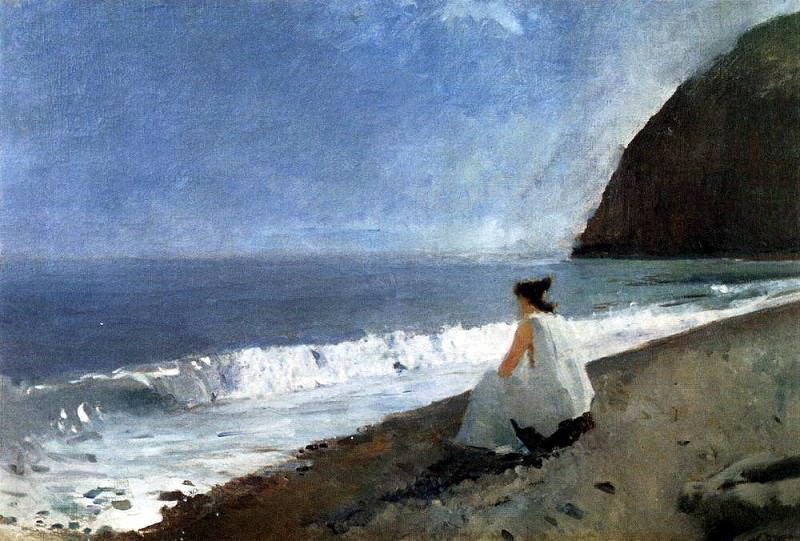Iphigenia in Tauris. 1893 Valentin Serov (1865-1911)
Valentin Serov – Iphigenia in Tauris. 1893
Edit attribution
Download full size: 1000×676 px (0,1 Mb)
Painter: Valentin Serov
The painting’s plot was based on the legend of the Greek king Agamemnon’s daughter, Iphigenia, who was sacrificed to Athena, the goddess of war. In Homer’s poem, The Iliad, it is recounted that, wanting to be victorious in the ten-year Trojan War, the Greeks more than once sacrificed their daughters to please the whims of the gods. As one of the instigators of the campaign against Troy, Agamemnon could not refuse the fate of her daughter, and she was placed on the altar of Athena Pallada.
Description of Valentin Serov’s painting Iphigenia in Tauris
The painting’s plot was based on the legend of the Greek king Agamemnon’s daughter, Iphigenia, who was sacrificed to Athena, the goddess of war. In Homer’s poem, The Iliad, it is recounted that, wanting to be victorious in the ten-year Trojan War, the Greeks more than once sacrificed their daughters to please the whims of the gods.
As one of the instigators of the campaign against Troy, Agamemnon could not refuse the fate of her daughter, and she was placed on the altar of Athena Pallada. Admiring the beauty of the girl, the goddess would not accept the gift. Replacing the girl with a doe, she took her to Tauris where she became one of the priestesses of the temple of Athena.
Serov’s painting depicts Iphigenia after her arrival on the shores of Tauris. The girl sits on a rock by the sea and looks thoughtfully into the endless distance. Her face is invisible, and that is why the viewer can’t understand if she is sad about her lost loved ones or if she is gnawing at her loneliness. The girl’s body is dressed in white, which is quite in keeping with her position as an innocent priestess in the temple. As was the custom at the time, Iphigenia’s hair is gathered at the nape of her neck.
The virgin beauty of the nature surrounding the girl, the Black Sea foaming at her feet, the shining blue sky spread over her head and the impregnable cliffs rising behind her. The sea and sky merge into one whole, the naked eye can hardly distinguish edge of water from clouds and horizon line.
There is not a living soul on the shore and Iphigenia can fear for her unwilling peace. It is not clear whether this pleases the girl or not, her fate is henceforth and forever bound to these desolate places, so unlike her beloved homeland.
The painting was created in 1893, was not once subjected to restoration, is stored in the State Museum of Fine Arts of the Republic of Tatarstan. It is a vivid example of the work of the artists-peredvizhniki.
Кому понравилось
Пожалуйста, подождите
На эту операцию может потребоваться несколько секунд.
Информация появится в новом окне,
если открытие новых окон не запрещено в настройках вашего браузера.
You need to login
Для работы с коллекциями – пожалуйста, войдите в аккаунт (open in new window).




















You cannot comment Why?
The paintings title, Iphigenia in Tauris, alludes to the Greek myth where Iphigenia, daughter of Agamemnon, is sacrificed but is saved by the goddess Artemis and taken to Tauris. There, she is forced to offer foreign visitors as sacrifices. The image suggests Iphigenias longing for home, her isolation in a foreign land, and perhaps her internal struggle with her grim duties. The wild, untamed sea and the imposing cliff can be interpreted as symbols of her fate, her captivity, and the overwhelming circumstances she faces. The muted color palette, dominated by blues, grays, and earthy tones, contributes to the somber and introspective mood of the artwork.